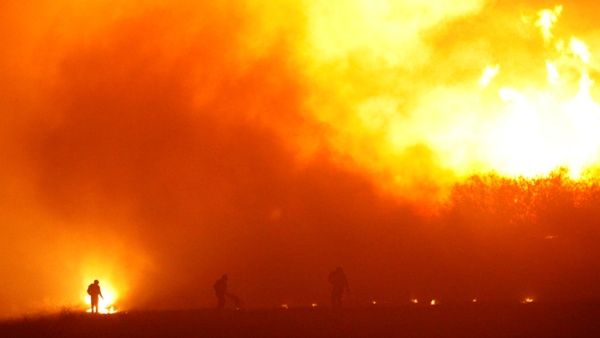Jan/17 Wildfires in Chile: On Climate change, institutional response and conspiracy theories

(Photograph Reuters)
Experts Julian Montero and Marc Castellnou from the EU Commission on Civil Protection & Humanitarian Help are holding a press conference in Chile. Sitting next to Castellnou is the Head of CONAF (National Forests Corporation), Aaron Cavieres, and acting Minister of Agriculture, Claudio Ternicier. Castellnou’s press conference is meant to leave no doubts. The January/17 wildfires in the regions of Cauquenes, O’Higgins, Maule, and Bio-Bio have been of such devastating intensity, “no country in the world is prepared to deal with fires of this magnitude, the characteristics they presented, the simultaneity of outbreaks, and their aggressive nature.”
Indeed, international experts, the press, and national data show that the magnitude, nature, and scope of the fires that broke out in January this year in Chile were some of the worst on the planet. According to Castellnou, the fires were unique in the pattern in which they spread and the velocity and fierceness in which they spread.
Castellnou stated Chile went literally through a “firestorm.”
Castellnou remarked that 8 years of relentless drought, scarcity of rainfalls, and a shortage of water supply are among the reasons that explain why the fires broke havoc in three regions in Chile. These are the regions where the olives are produced, the valleys from where Chilean wine is exported, the valleys where grapes are harvested, where fruits and pine plantations are grown in co-habitation with native species but also subjected to climate change within the precepts of an extractive economy. Consequently, these are the regions in need of improved planning and regulation. The following is an analysis of the effects and the urgency of upgrading the institutional response in the planning and regulation of major stakeholders in one of the most productive regions in Chile.


